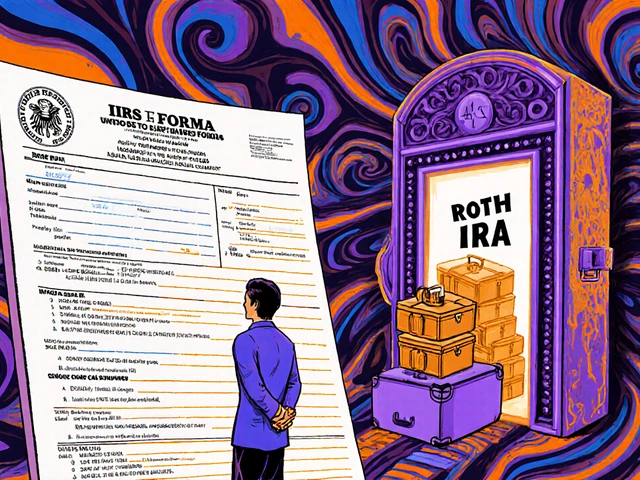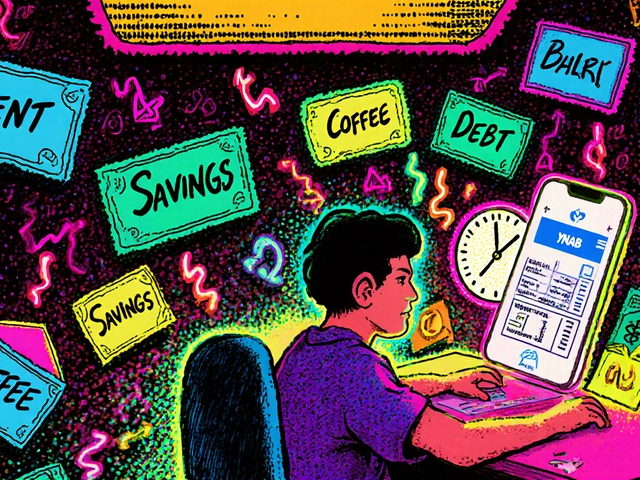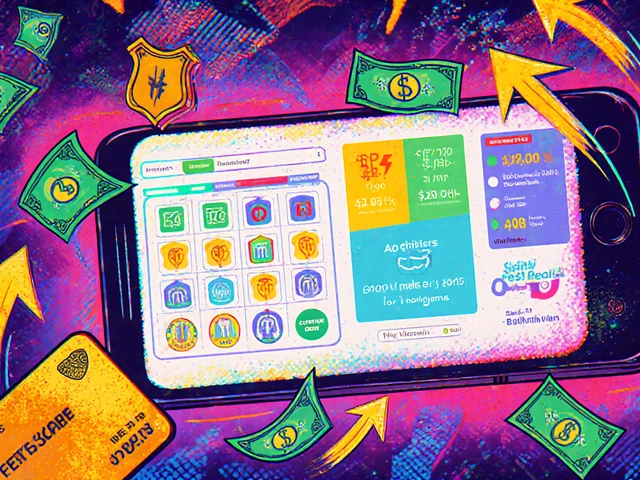Idempotency Key Generator
Generate cryptographically secure UUIDs (v4) for use as idempotency keys in payment systems. These keys prevent duplicate charges by ensuring the same request is only processed once.
Why UUIDs? UUIDv4 generates 122 bits of entropy (1 in 2^122 chance of collision), making them practically collision-proof. This is essential for payment systems where duplicate charges can lead to costly errors.
Imagine this: a customer clicks "Pay Now" on your e-commerce site. The network glitches. The page freezes. They click again. Suddenly, your system processes two identical payments. The customer gets charged twice. You get a refund request. Your finance team spends hours tracking down the error. This isn’t a rare mistake-it’s a common failure in systems that don’t use idempotency keys.
What Are Idempotency Keys and Why Do They Matter?
An idempotency key is a unique string you send with every payment request to tell the system: "If you’ve already processed this exact request, just give me the same answer again-don’t do it twice." It’s not magic. It’s simple engineering that stops duplicates before they happen. Think of it like sending a letter with a tracking number. If the post office loses it, you send another copy with the same number. The system sees the number, checks its records, and says, "Oh, I already delivered this one." No duplicate delivery. No wasted stamps. In payment systems, this prevents the exact same charge from going through twice because of a timeout, a network hiccup, or a user clicking too fast. Without it, systems are vulnerable to accidental double charges. According to Modern Treasury’s 2022 analysis, 12-18% of payment reconciliation errors in poorly designed systems came from duplicate transactions. That’s not a glitch-it’s a design flaw.How Idempotency Keys Work Under the Hood
When you make a payment request, you include a header likex-idempotency-key: abc123-def456. The payment processor checks if it’s seen that key before.
- If it has: returns the original response (success, error, or pending) without processing anything new.
- If it hasn’t: processes the payment, saves the response, and stores the key for future checks.
uuid.uuid4(), JavaScript’s crypto.randomUUID(), or Java’s UUID.randomUUID() generate cryptographically random strings that are practically impossible to duplicate.
How Major Payment Platforms Handle It
Every major payment provider uses idempotency keys-but not the same way.- Amazon Pay uses the header
x-amz-pay-idempotency-key. Keys are limited to 32 alphanumeric characters or hyphens. Amazon stores them forever per merchant account. That means if you retry a request a year later with the same key, it still works. - Square requires a unique key for operations like
CreatePayment. If you send the same key with different parameters (like a different amount), Square rejects it with aDuplicateIdempotencyKeyerror. This prevents accidental overcharges. - Adyen allows keys up to 64 characters and recommends UUIDs. It keeps keys for 24 hours. After that, the key is forgotten. If you retry after 24 hours, it processes as a new request.
- Shopify applies idempotency to payment processing and subscription billing. Update and delete operations are inherently idempotent, so no key is needed there.

Common Mistakes Developers Make
Even with clear documentation, people mess this up. Here are the top errors:- Using timestamps as keys. Two clicks 0.1 seconds apart get the same timestamp. Boom-duplicate charge.
- Not generating truly random keys. Rolling your own random string with Math.random() isn’t safe. Use a real UUID library.
- Ignoring case sensitivity. Adyen’s API requires case-insensitive headers. If your code sends
X-Idempotency-Keyin one place andx-idempotency-keyin another, it treats them as different. - Using idempotency as a fix for bad error handling. If your app crashes and retries everything blindly, you’re masking a deeper problem. Idempotency is a safety net, not a band-aid.
- Forgetting key expiration. If your system keeps generating new keys forever, you’ll eventually hit storage limits. Plan for cleanup.
When Idempotency Keys Aren’t Enough
Idempotency keys prevent duplicate requests. They don’t fix broken logic. Max Bouck, CTO of Modern Treasury, says: "Idempotency keys are a last-resort safety measure. The real foundation is solid state machines and atomic database transactions." For example:- If your system creates a payment record but fails to update inventory, idempotency won’t help. You still have an inconsistent state.
- If you allow partial refunds or adjustments after a payment, idempotency keys can’t prevent double refunds.
- If a user clicks "Pay" twice because your UI is slow, you need better UX-not just idempotency.
- Database transactions that roll back on failure
- State machines that track payment status (pending → processed → refunded)
- Real-time reconciliation between your system and the payment processor

Testing and Implementation Tips
Don’t assume it works. Test it like your business depends on it-because it does.- Use Toxiproxy to simulate network timeouts. Send the same request twice in quick succession. Verify the second returns the same result without processing.
- Test parameter changes. Send the same key with a different amount. Does the system reject it? (Like Square) or accept it? (Like Adyen)
- Check header casing. Send the key in uppercase, lowercase, and mixed case. Does your code handle all variations?
- Simulate retries after 24 hours. If you’re using Adyen or Square, make sure your system generates a new key after the expiration window.
The Bigger Picture: Why This Isn’t Optional Anymore
In 2020, only 62% of payment processors supported idempotency keys. By 2023, it was 100%. Gartner’s 2023 report says 90% of payment APIs will enforce it for all state-changing operations by 2025. Why? Because customers won’t tolerate being double-charged. Regulators are catching up. The European Central Bank’s PSD3 draft guidelines mention idempotency as a requirement. PCI DSS 4.0 now links it to transaction reconciliation (Requirement 10.2.5). For businesses, it’s simple: if you’re processing payments via API, you need idempotency keys. Not because they’re trendy. Because without them, you’re gambling with your customers’ money.What Comes Next?
The future? Idempotency becomes invisible. Like HTTPS. You won’t write code for it-you’ll just expect it. OpenAPI Initiative is drafting standard headers for idempotency. Payment orchestration platforms are building it into their core. The goal is for developers to stop thinking about it. Until then? Build it right. Use UUIDs. Test exhaustively. Don’t treat it as a checkbox. Treat it like your business depends on it-because it does.What happens if I reuse an idempotency key after 24 hours?
It depends on the provider. Adyen, Square, and Modern Treasury expire keys after 24 hours. After that, the system treats the request as new and processes it again. Amazon Pay stores keys indefinitely, so the same key will always return the original result. Always check your payment processor’s documentation.
Can I use the same idempotency key for different payment amounts?
No, and most systems will reject it. Square explicitly returns a DuplicateIdempotencyKey error if the parameters (like amount or currency) change. Even if a provider doesn’t enforce this, you shouldn’t do it. Reusing a key with different values breaks the guarantee that the operation is idempotent and can cause reconciliation nightmares.
Do I need idempotency keys for GET, DELETE, or PATCH requests?
No. HTTP defines GET, DELETE, and PATCH as idempotent by design-meaning calling them multiple times has the same effect as calling them once. Amazon Pay’s documentation specifically warns against adding idempotency headers to these methods. Only use them for POST requests that create new resources, like payments or subscriptions.
What’s the best way to generate an idempotency key?
Use a V4 UUID generated by a trusted library: Python’s uuid.uuid4(), JavaScript’s crypto.randomUUID(), or Java’s UUID.randomUUID(). Avoid timestamps, counters, or hand-rolled random strings. V4 UUIDs have a 1 in 2^122 chance of collision-so low it’s practically impossible.
Why do some companies store idempotency keys forever while others delete them after 24 hours?
It’s a trade-off between safety and storage. Amazon Pay stores keys forever so you can safely retry requests even weeks later-useful for systems with long-running workflows. Others like Adyen and Square use 24-hour windows to save space and prevent accidental reuse over long periods. The 24-hour window is sufficient for most retry scenarios, like network timeouts or user re-clicks. Long-term storage is rarely needed unless you’re dealing with offline systems or batch processing.






Comments
Let me tell you, I used to rely on timestamps for idempotency keys until one Friday afternoon when a customer got charged £499 twice for a single hoodie. Finance screamed. Support cried. I spent 14 hours debugging. Now? Every payment request gets a uuid.uuid4(). Zero duplicates since. Don’t be the guy who reinvents the wheel with Math.random().
It is truly fascinating how such a seemingly small technical detail-idempotency keys-can hold within it the entire philosophy of reliability in digital systems. One might say that in the act of assigning a unique identifier to each transaction, we are not merely preventing double charges, but affirming a moral commitment: that every human’s money deserves to be treated with unwavering precision. The fact that some platforms retain these keys indefinitely while others discard them after twenty-four hours speaks to a deeper tension between permanence and pragmatism, between the ideal of absolute safety and the practical limits of storage. And yet, even this is not enough. For if our systems are not built atop atomic transactions and state machines, then idempotency becomes a bandage on a severed artery. We must not confuse prevention with healing. The real work lies not in the header, but in the architecture beneath.
Bro, just use crypto.randomUUID() and call it a day. Seriously. Stop rolling your own random strings. Adyen’s 24hr window? Fine. Amazon’s forever storage? Overkill unless you’re doing batch ops. And please, for the love of god, don’t reuse keys with different amounts-that’s how you get audit nightmares. Idempotency isn’t a feature, it’s a contract. Break it and your finance team will haunt your Slack.